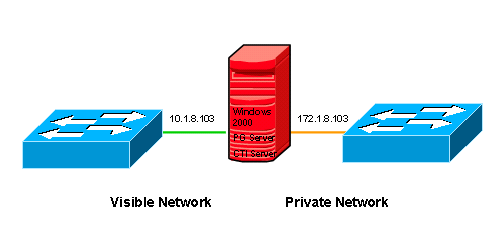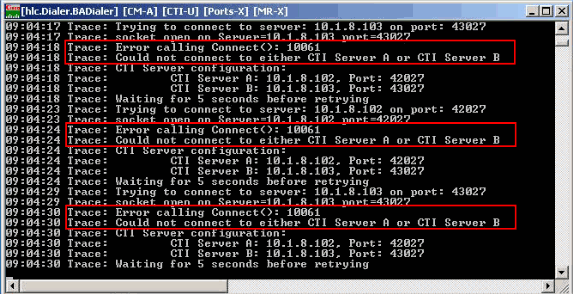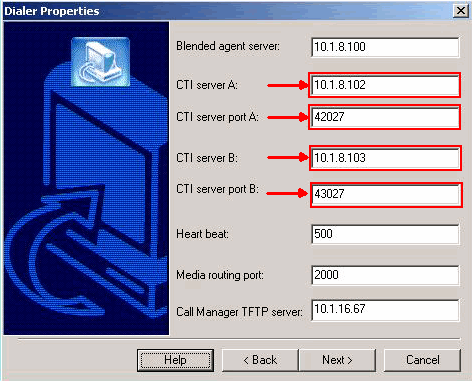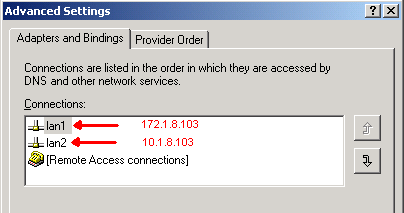BA Dialer Fails to Connect with CTI Server - NIC Binding Order
Available Languages
Contents
Introduction
This document describes one reason why the Cisco Blended Agent (BA) Dialer fails to establish a session with the Computer Telephony Integration (CTI) server and provides a solution in a Cisco Intelligent Contact Management (ICM) environment.
Prerequisites
Requirements
Cisco recommends that you have knowledge of these topics:
-
Cisco ICM
-
Microsoft Windows 2000 Server
Components Used
The information in this document is based on these software and hardware versions:
-
Cisco ICM version 5.0 and later
-
Microsoft Windows 2000 Server
The information in this document was created from the devices in a specific lab environment. All of the devices used in this document started with a cleared (default) configuration. If your network is live, make sure that you understand the potential impact of any command.
Conventions
Refer to Cisco Technical Tips Conventions for more information on document conventions.
Topology
The CTI Server is an optional component that allows an external CTI application to communicate with a Peripheral Gateway (PG). It can reside on the same machine as the PG or on a separate machine. Microsoft Windows 2000 is the accepted platform for ICM version 5.0 and later.
Figure 1 shows the troubled PG and CTI Server setup. It runs on side B of a duplexed PG. It has two Network Interface Cards (NIC). One for the visible network and the other is for the private network. Traffic between the CTI Server and the BA Dialer travels the visible network.
Figure 1: CTI Server with Two NICs 
Problem
BA Dialer fails to connect with the CTI Server, as Figure 2 shows. Eventually, the session request times out.
Figure 2: BA Dialer 
Troubleshoot
Complete these steps when this problem occurs:
-
Configure and run the ctitest command on both CTI Servers (A and B).
-
Verify the network, IP address, and port number if the test fails.
Note: Refer to the CTI Test Guide for information about the ctitest command.
-
Run netstat -n -a to verify that the correct IP address listens to the correct port on the active CTI Server.
Solution
When you establish a session in TCP IP, an IP address and port number are required on both the source and destination machines. According to the dialer configuration, as Figure 3 shows, the session request is sent to either port 42027 or port 43027 for CTI Server A (10.1.8.102) or CTI Server B (10.1.8.103) respectively.
Figure 3: Dialer Properties 
The root of the problem is the NIC binding order. In ICM, when the CTI Server opens a session, it listens to port 42027 or 43027 on CTI Server A or B, respectively. In a multiple NIC environment, the CTI Server listens to ports of the first NIC's IP address in Microsoft Windows 2000 server.
Since the IP address of the first NIC is 172.1.8.103 on the CTI Server B, as Figure 4 shows, the CTI Server listens to port 43027 (CTI Server B) of IP address 172.1.8.103. But the BA Dialer sends the session request to port 43027 of IP address 10.1.8.103 . Thus, the session fails to establish between the CTI Server and the BA Dialer.
Figure 4: Binding Order 
Change the binding order to fix the problem. Refer to CRA Engine Not Starting with Second NIC Installed for information on how to modify the NIC binding order.
Related Information
Revision History
| Revision | Publish Date | Comments |
|---|---|---|
1.0 |
16-Sep-2005 |
Initial Release |
 Feedback
Feedback